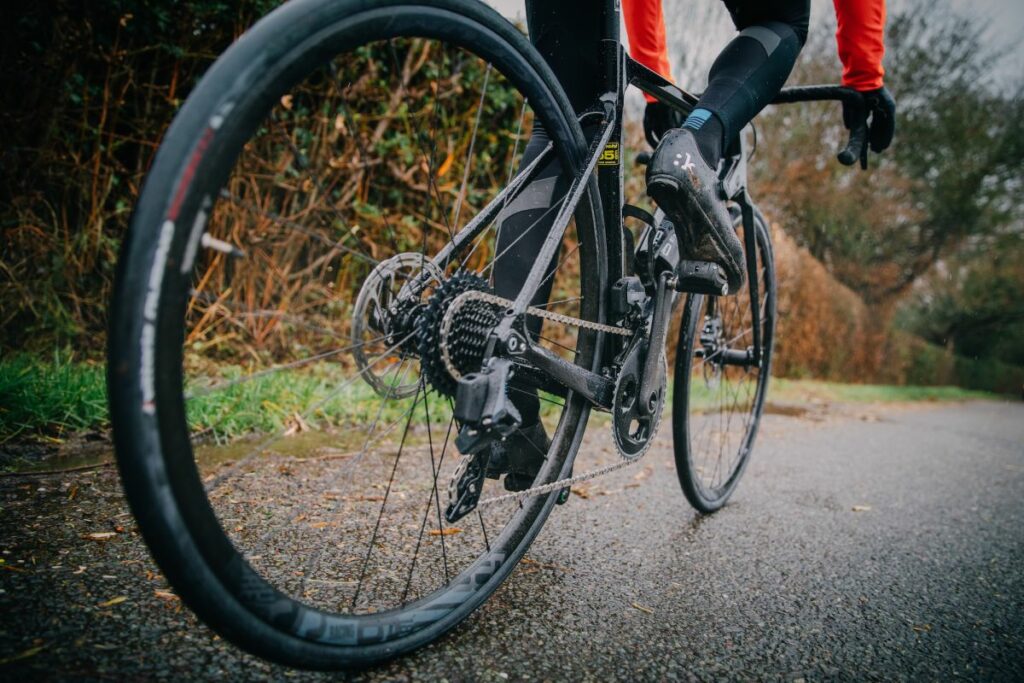What is good average watts cycling?
Most people associate the term watts with light bulbs as opposed to cycling a bike. However, the term which was borrowed from James Watt the Scottish inventor is simply a measure of rates of energy conversion.
As such it can be used to measure energy conversion for anything from the pumping of legs to riding a bike up a mountain pass, ramp, or hill or the electricity that makes a filament in a light bulb glow.
More power conversion otherwise known to refer to as more watts is a good thing as it allows one to go faster or farther which goes to show how fit a cyclist is.
Power to Weight Ratio
The power-to-weight ratio is a measurement of how much power your produce on your bike as compared to your body weight. It is often expressed as W/kg, the power produced for every kilogram of weight a cyclist has.
Overall, larger riders are more powerful than smaller cyclists even though lighter riders usually need less energy to propel themselves forward and overcome inertia, particularly when climbing hills.
As such power to weight ratio is an effective way of comparing the abilities of different cyclists as compared to looking at just the power. Moreover, it also makes it possible for individual athletes to get a better understanding of their own abilities as they improve their fitness levels by optimizing their body weight.
How to Increase Power to Weight Ratio
The most effective way for both pro cyclists, beginners, and amateur cyclists to improve their watts/kg or power-to-weight ratio is to lose body fat. You can also improve your power-to-weight ratio by increasing muscle mass even though it is much quicker and easier to lose body fat.
If you are an endurance rider, the most critical thing you can do is to train slow twitch fibers which would involve increasing the size and number of mitochondria. If you are a sprinter you would be better off increasing the number of fast twitch fibers.

What is the functional Threshold Power (FTP) Of a Cyclist
The functional threshold power of a cyclist is the highest power you can achieve and maintain in a quasi-steady state for at least an hour of cycling without getting fatigued.
When power is greater than the FTP, a rider will typically get tired more quickly than if they were riding just below their FTP.
Using power zone training you can then make use of baseline FTP numbers to come up with custom-made watt ranges for goals such as active recovery, tempo, endurance, and anaerobic thresholds among many others.
Average Watts Beginner Cyclist
A beginner cyclist will attain an average wattage output of between 75-100 watts during an hour-long workout session. A more fit amateur cyclist will typically get at least 100 watts while professional cyclists can go as high as 400 watts.
Average watt cycling goals typically vary from rider to rider. As such what is a good average power output cycling varies widely depending on levels of fitness and experience.
Average Cyclist Watts
A fit cyclist will usually crank between 250-300 watts over a 20-minute FTP test. This is in the middle of the pack between the pro cyclists who average up to 400 watts and beginners who usually average between 75-100 watts.
Nonetheless, it is important to remember that wattage is sometimes not so simple to measure p[particularly since wattage depends on the weight of the rider. A smaller rider will typically output fewer watts than a larger rider.
However, that will not necessarily mean that he is riding slower – since it takes a lot fewer watts to propel his lighter body weight.
Average Wattage of a Pro Cyclist
According to the data a professional cyclist produces about 400 watts of power from 41m28s which is 5.78W/kg given that Froome weighs about 67 kg. According to Froome’s head of performance, Froome averages 414 watts but sometimes goes as high as 419W over half an hour making for a power output of about 6.25W/kg.
Measuring physiological capability in the lab is one thing but there is nothing better than carrying measurements of power output on the road.
Given the media storm over Chris Froome’s second win at the Tour de France, Team Sky provided his power files from which we can glean some insightful information on how much power a pro cyclist can produce.
Overall, the average wattage at the Tour de France is about 400 watts even though some riders will go higher or lower and the terrain will also play a huge role in how much power the riders produce.
What About Power to Weight Ratio
While the power-to-weight ratio does not have a direct correlation to average power, it does provide some context, particularly for riders who may have lower-than-average numbers.
Simply put, your power-to-weight ratio is your FTP, the maximum power you can maintain for about an hour divided by your weight in kilograms.
The equation: power to weight = FTP / body weight in kilograms
Power to weight ratio is important for average power since the smaller you are, the more difficult it is to get higher watt output, not necessarily because of strength, but because of simple physics. You will be pushing much less weight.
It is for this reason that platforms such as Zwift make use of power-to-weight ratios to determine your category in a race. They thus make use of body weight as riders with bigger bodies tend to have bigger muscles which means they can produce more power without seating it as compared to a smaller person.
To illustrate this check this out:
- A 250-pound racer with an FTP of 300 watts would have a power-to-weight ratio of 300 / 113 (the rider’s weight in kilograms), which equals 2.65 watts per kilogram.
- A 125-pound racer with an FTP of 150 watts would have a power-to-weight ratio of 150 / 56.6 (the rider’s weight in kilograms), which equals 2.65 watts per kilogram.
- A 125-pound racer with an FTP of 300 watts would have a power-to-weight ratio of 300 / 56.6 (the rider’s weight in kilograms), which equals 5.3 watts per kilogram.
As such, you would have an advantage if you have a higher FTP and are of a lower weight as compared to a rider outputting the same wattage but who is larger.
For this reason, it is critical to not get too concerned if you have lower average power as compared to other riders since your friend may have higher average power if they are larger than you but that does not mean you are weaker.
How to Determine Your Power-to-Weight Ratio
Even though metrics such as speed and heart rate can be influenced by other factors, average power cycling tends to be a very objective measure. Technically speaking a watt is a measurement of energy transfer that is typically measured in real-time using a power meter.
For the most part, watts refer to the functional threshold power or sustainable power over a given period. As such for one to determine their power-to-weight ratio, they would need to know their FTP.
FTP is usually determined using simple testing procedures. Common FTP tests usually include the 8-minute or 20-minute test. Once you get your FTP numbers all you would need is to note your current weight to determine your power-to-weight ratio.
The Benefit of Measuring Cycling Wattage
The advantage of monitoring cycling wattage is that power output will never lie, unlike other measures such as heart rate or speed. If you ride your standard route and average 160 watts even though you used to average only 125 watts, this is an indicator that you have become stronger.
By working with your trainer you can then implement training methods to get you stronger which will over time make you able to ride long distances and attain higher speeds.
Is 200w a lot of power cycling
200 watts sustained over a period of 2-3 hours is pretty good power when cycling. While it is not pro or elite-level cycling, it is good power output for the average cyclist who cycles regularly.
Is 1000 watts Good Cycling
1000 watts is a pretty impressive cycling power output even though it is only the elite and pro-level cyclists who can achieve it and usually for only short periods of time when they are doing sprints
Is 300 watts a lot Cycling
300 watts is a lot but it is what the typical fit cyclist will be able to crank out over 20 minutes as compared to the 400-watt power output for a professional cyclist
How Many Watts is Good for Cycling
There is no appropriate power output for all cyclists. What wattage is good for a cyclist will depend on their experience, age, and fitness levels among other things


